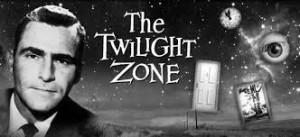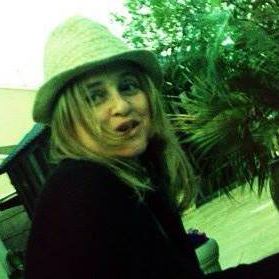 A few weeks ago HBO and then CBS announced that they would launch stand-alone online services in U.S. in 2015. Before that, Netflix had made known that it would start producing features, crushing theatrical release windows once and for all, after it had contributed to the change of the patterns of attention and the way TV series are made by releasing its House of Cards episodes all at once, as a 13-hour movie. ‘Now the real shakeout begins’, wrote Ted Hope in Hollywood Reporter. ‘We are witnessing the march from once lucrative legacy practices built around titles to a new focus on community.’ Michael Wolff, writing also in the Hollywood Reporter, disagrees: ‘Streaming services from the two networks don’t signal television’s capitulation to Netflix and the web; it’s actually the opposite, as the medium expands yet again to gobble up more revenue.’ And in that sense, he says, it will hurt Netflix and all other digital competitors.
A few weeks ago HBO and then CBS announced that they would launch stand-alone online services in U.S. in 2015. Before that, Netflix had made known that it would start producing features, crushing theatrical release windows once and for all, after it had contributed to the change of the patterns of attention and the way TV series are made by releasing its House of Cards episodes all at once, as a 13-hour movie. ‘Now the real shakeout begins’, wrote Ted Hope in Hollywood Reporter. ‘We are witnessing the march from once lucrative legacy practices built around titles to a new focus on community.’ Michael Wolff, writing also in the Hollywood Reporter, disagrees: ‘Streaming services from the two networks don’t signal television’s capitulation to Netflix and the web; it’s actually the opposite, as the medium expands yet again to gobble up more revenue.’ And in that sense, he says, it will hurt Netflix and all other digital competitors.
What is now undeniably clear, is that we have entered a new chapter in film and TV history, and that no one can really say what will happen next. And since we cannot look into the future, it might help to look back to the beginnings of television:
Regular network television broadcasts began in 1946, color television in 1951. In the U.S. there were now four national networks, NBC, CBS, ABC and DuMont. This major expansion of the television industry necessitated a rapid increase for new content. Hollywood felt competitive and dismissive towards the new medium, so they did not deliver the desired movies to fill the program and there was a need for new shows. And because this early video era preceded the advent of telefilm and videotape, everything was live. This meant a programming vortex with an inexhaustible demand for shows.
When everything started, TV took four things from radio:
-
that it was live;
-
that it was episodic;
-
that funding came through advertising;
-
and that it was a writer’s medium.
And where did TV get the writers from? The theatre. Ironically, it was the excellent live teledramas that mostly theatre writers wrote that helped television to displace radio, the stage and cinema as the favorite leisure-time activities for the audience. The “golden age” of American television generally refers to the proliferation of original and classic dramas produced for live television during America’s postwar years, especially from 1949 to 1958.
The anthology series, a favorite format of the time, was largely the creation of theatre people: it was not episodic in the sense that the story would continue from episode to episode, but it was a series. Each episode was a separate story/play rather than a weekly return to the same setting, characters, and stars. The anthology dramas were broadcast live from New York and they changed the view on television as low-brow. They emphasized diversity and were basically a carte-blanche invitation to writers.
 Early TV drama was branded rather than interrupted by ads, limiting because of its dramatically low budget – and therefore ideal for small-scale intimate stories. Writers of the time were Rod Serling, Paddy Chayefsky, Gore Vidal, Reginald Rose, Tad Mosel. They were condescendingly called the video boys by their playwright peers but they had found creative freedom, a place to produce their work continuously and critical success.
Early TV drama was branded rather than interrupted by ads, limiting because of its dramatically low budget – and therefore ideal for small-scale intimate stories. Writers of the time were Rod Serling, Paddy Chayefsky, Gore Vidal, Reginald Rose, Tad Mosel. They were condescendingly called the video boys by their playwright peers but they had found creative freedom, a place to produce their work continuously and critical success.
In addition to writers and of course actors, some renowned Hollywood directors got their big break on television’s anthology dramas: John Frankenheimer directed for the Kraft Television Theater, Robert Altman for Alfred Hitchcock Presents, Yul Brynner and Sidney Lumet for Studio One, Sidney Pollack for The Chrysler Theater (1965 Emmy for “Directorial Achievement in Drama”) and Delbert Mann for NBC Television Playhouse.
Some of the most successful and critically acclaimed dramatic anthology programs of the “golden age” were, Armstrong Circle Theater (thirteen seasons), Kraft Television Theater (eleven seasons), Alfred Hitchcock Presents (ten seasons), Studio One (ten seasons), The U.S. Steel Hour (ten seasons), General Electric Theater (nine seasons), Philco Television Playhouse (seven seasons), Goodyear Playhouse (six seasons), Playhouse 90 (four seasons), and Twilight Zone (four seasons-revived in 1985-88).
It was not long before the Hollywood studio bosses realized that TV was a business. By the mid-1950s, original television dramas started providing material for feature films. Marty, 12 Angry Men, No Time for Sergeants, Requiem for a Heavyweight, and other original television plays were turned into motion pictures. Kraft Television Theatre was the last anthology drama broadcast live from New York, during its final season in 1957-58. By then most production had already shifted over to the Hollywood studios and to filmed shows. Writers stopped having the creative freedom they used to have, and TV’s golden age was over.
 Might we be looking at a new shift of that dimension? Following on the heels of HBO, CBS, Lionsgate and Univision, YouTube and Vimeo, both home for a growing number of web TV creators in the last few years, are now also planning a subscription video service. Does that mean that the freedom and creativity that these web TV creators enjoyed, will get lost before Web TV could reach its golden age or are we possibly heading towards a new era that will bring new resources for indie film and TV to the internet and, as Hope argues, will even set the stage for quality film to rise again?
Might we be looking at a new shift of that dimension? Following on the heels of HBO, CBS, Lionsgate and Univision, YouTube and Vimeo, both home for a growing number of web TV creators in the last few years, are now also planning a subscription video service. Does that mean that the freedom and creativity that these web TV creators enjoyed, will get lost before Web TV could reach its golden age or are we possibly heading towards a new era that will bring new resources for indie film and TV to the internet and, as Hope argues, will even set the stage for quality film to rise again?
One would hope for the latter. For one thing, as both the “golden age” of the 1950s and recent cable series have shown, the audience loves the sophisticated narrative and dramatic complexity that comes out when the creators are given the freedom to create.
 Christina Kallas’ credits as a writer/producer include a number of awarded feature films and TV series, among them The Commissioner, I.D., Danni Lowinski, and Mothers. In 2011 she relocated to New York City, where she is currently teaching at Columbia University’s and Barnard College’s Film Programs, as well as at the New School for Media Studies, and editing her next feature film (and her first as a director,) 42 Seconds of Happiness. She is the author of Inside the Writers’ Room. Conversations with American TV Writers and Creative Screenwriting: Understanding Emotional Structure (London/NYC, 2014 and 2010). Most recently, Kallas was honored for her outstanding contribution to the international writers’ community for her eight years of tenure as President of the Federation of Screenwriters in Europe – in which time she organized the European Conference of Screenwriters, that produced the Manifesto of European Screenwriters, as well as initiated the series of World Conferences of Screenwriters that after Athens 2009 and Barcelona 2012 saw its third edition in Warsaw 2014. You can reach Christina Kallas at improv4writers@gmail.com, follow her on Facebook or Twitter and join the Writers Improv Studio group page for updates.
Christina Kallas’ credits as a writer/producer include a number of awarded feature films and TV series, among them The Commissioner, I.D., Danni Lowinski, and Mothers. In 2011 she relocated to New York City, where she is currently teaching at Columbia University’s and Barnard College’s Film Programs, as well as at the New School for Media Studies, and editing her next feature film (and her first as a director,) 42 Seconds of Happiness. She is the author of Inside the Writers’ Room. Conversations with American TV Writers and Creative Screenwriting: Understanding Emotional Structure (London/NYC, 2014 and 2010). Most recently, Kallas was honored for her outstanding contribution to the international writers’ community for her eight years of tenure as President of the Federation of Screenwriters in Europe – in which time she organized the European Conference of Screenwriters, that produced the Manifesto of European Screenwriters, as well as initiated the series of World Conferences of Screenwriters that after Athens 2009 and Barcelona 2012 saw its third edition in Warsaw 2014. You can reach Christina Kallas at improv4writers@gmail.com, follow her on Facebook or Twitter and join the Writers Improv Studio group page for updates.





